Nestled high up in the Eastern Himalayas, Gangtok is arguably among the most beautiful gems of India. The city is wreathed with clouds against a stunning backdrop of snow-capped peaks carpeted with verdure. The vibrant culture and rich traditions of the North-East, infused into the stunning landscape with a subtle touch of city life make Gangtok a major crowd puller and tourist hotspot.
Best Time To Visit
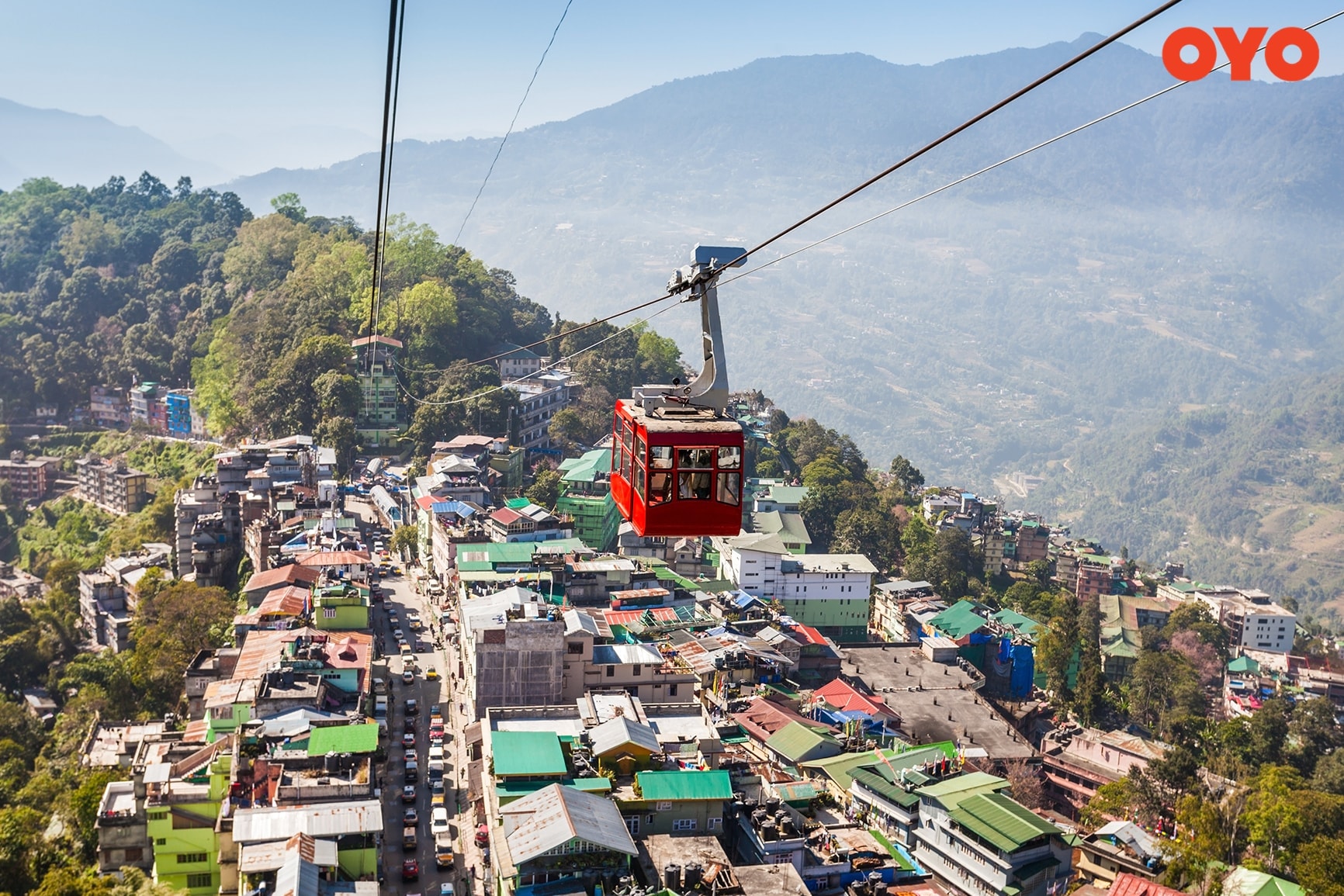
Gangtok enjoys a pleasant weather throughout the year. The best time to visit Gangtok is from October to December. The weather during this period is ideal for sightseeing. A clear view of the Himalayas is also guaranteed in these months. In the springtime between March and May, the town gets blanketed by a bloom of rich lilac Rhododendron flowers that lend further beauty to its landscape
Weather
Average annual temperature: 16°C
The summers in Gangtok are mild and pleasant. The temperature swings between 17°C and 25°C. The days are warm and sunny while a balmy breeze blows in the evenings. In the winter time and spring, the temperatures drop to a low of 2°C-7°C. The peaks get covered with a blanket of snow offering a treat to the eyes.
Places to Visit
Owing to its unique topography and geographical location, Gangtok is blessed with many spectacular view points and natural attractions. Its proximity to the neighboring countries of Nepal, Tibet and China is evident in the several Buddhist Temples and Pagodas.
Buddhist Monasteries
(i) Tsuk La Khang Monastery and Palace is a royal palatial monastery boasting a huge collection of Buddhist scriptures and literature and plays host to many Buddhist festivals. The monastery walls and altars are carefully decorated with murals and images of Buddha and other deities of Buddhism. Right in the centre of the monastery compound is a huge Buddhist temple. The temple has impressive interiors with a pair of carved dragon columns flanking the main images. The monastery complex is an oasis of calm and offers a deep insight into Buddhism
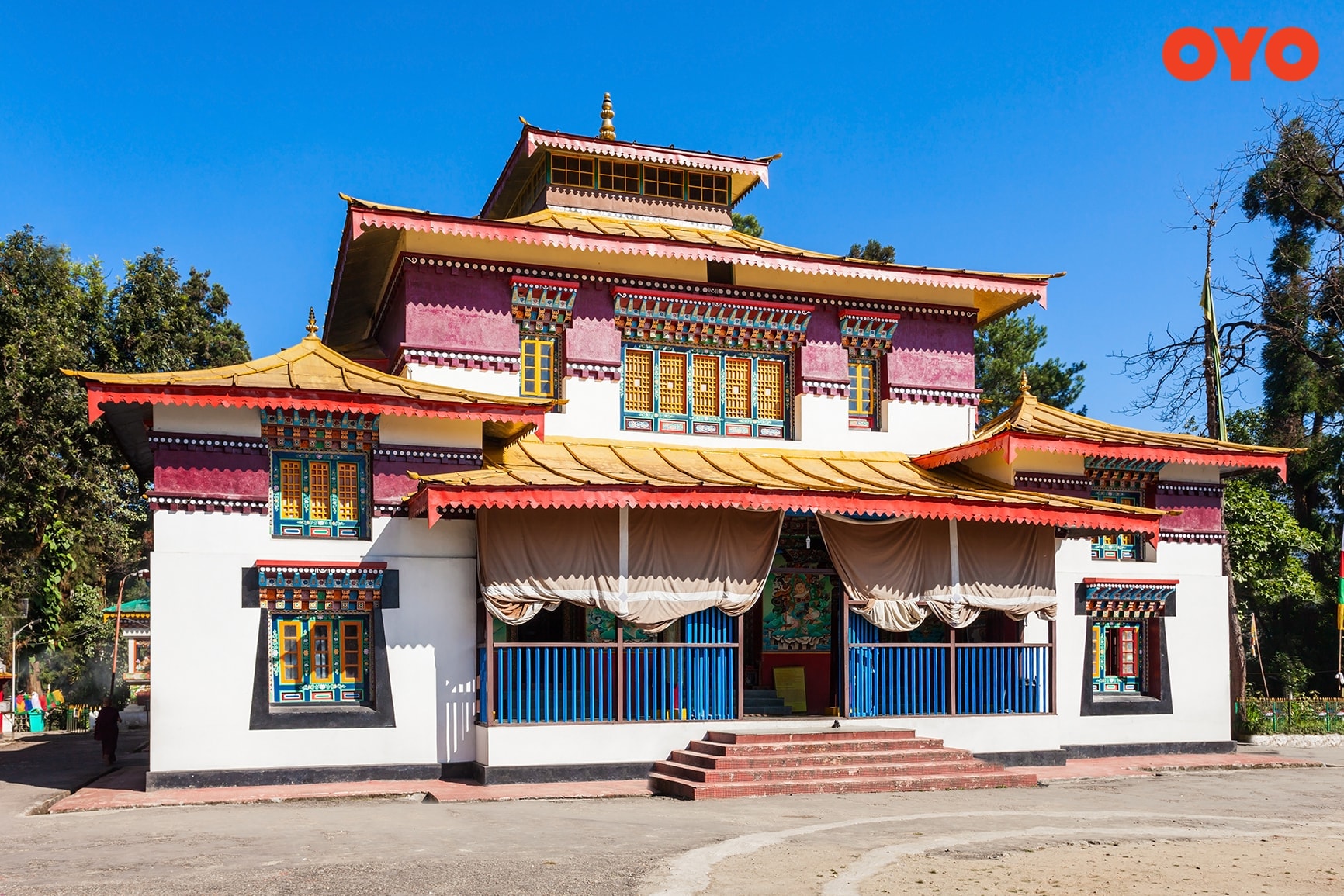
(ii) Flanked by a thick foliage of tall conifers, the Enchey Gompa is a small Buddhist monastery in the outskirts of Gangtok. The monastery prayer hall is decked with many tantric statues and miniatures. A large figure of Buddha against the backdrop of a three-dimensional scene is the main highlight of this Buddhist site.
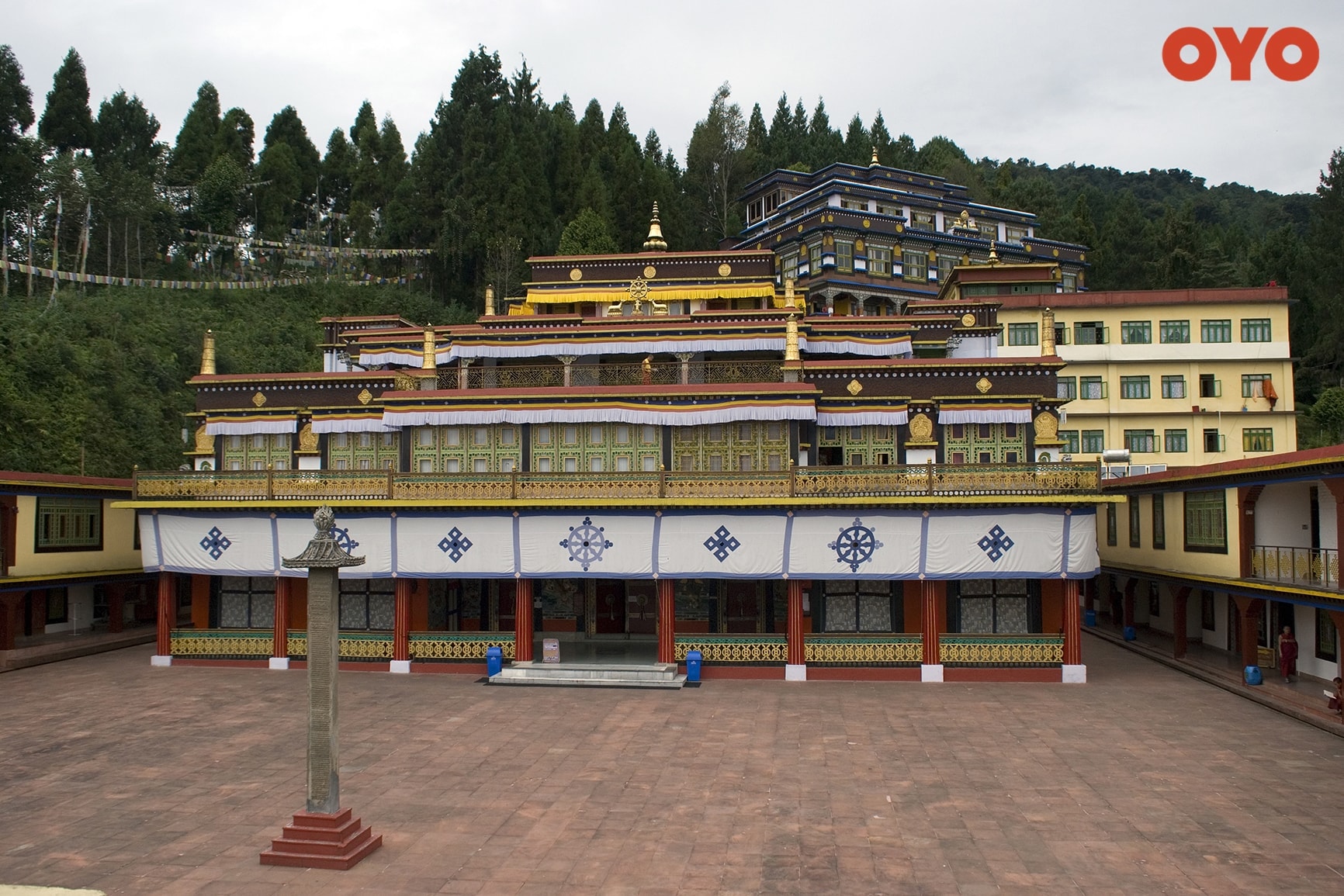
(iii) An hour away from Gangtok is the biggest monastery of Sikkim- Rumtek Monastery. First built in 1740, the monastery belongs to a 12th century sect of Tibet Buddhists. Its fine architecture mirrors the original monastery in Tibet. The main structure of the Rumtek monastery is three-storeyed with a huge golden stupa on the top. It houses some of the rare Buddhist religious artwork in form of wall murals and thangkas (scrolls with intricate hand paintings), more than 1000 miniature golden models of Buddha and several other sacred Buddhist artifacts.
Parks and Gardens
(i) Perched on the brink of a ridge, the Rustamji Park, colloquially known as Deer Park is a sanctuary inhabited by many species of deer. Established in the 1950s, the park is also home to other species like the Himalayan Bear and Red Panda. Apart from the wildlife and floral species, the park also has a large statue of Lord Buddha. It is widely believed that the park was constructed to mark the reincarnation of Lord Buddha as a musk deer.
(ii) Located an hour away from Gangtok, the Fambong La Wildlife Sanctuary is a popular attraction. The sanctuary is home to a rich variety of flora and fauna such as bearcat, civet cat, Himalayan black bear champa, ferns, oak, orchids and rhododendrons. A sightseeing tower in the sanctuary offers stunning vistas of the valley
The Flower Exhibition Centre and Saramsa Garden are other popular natural attractions in Gangtok.
Must-Visit places near Gangtok
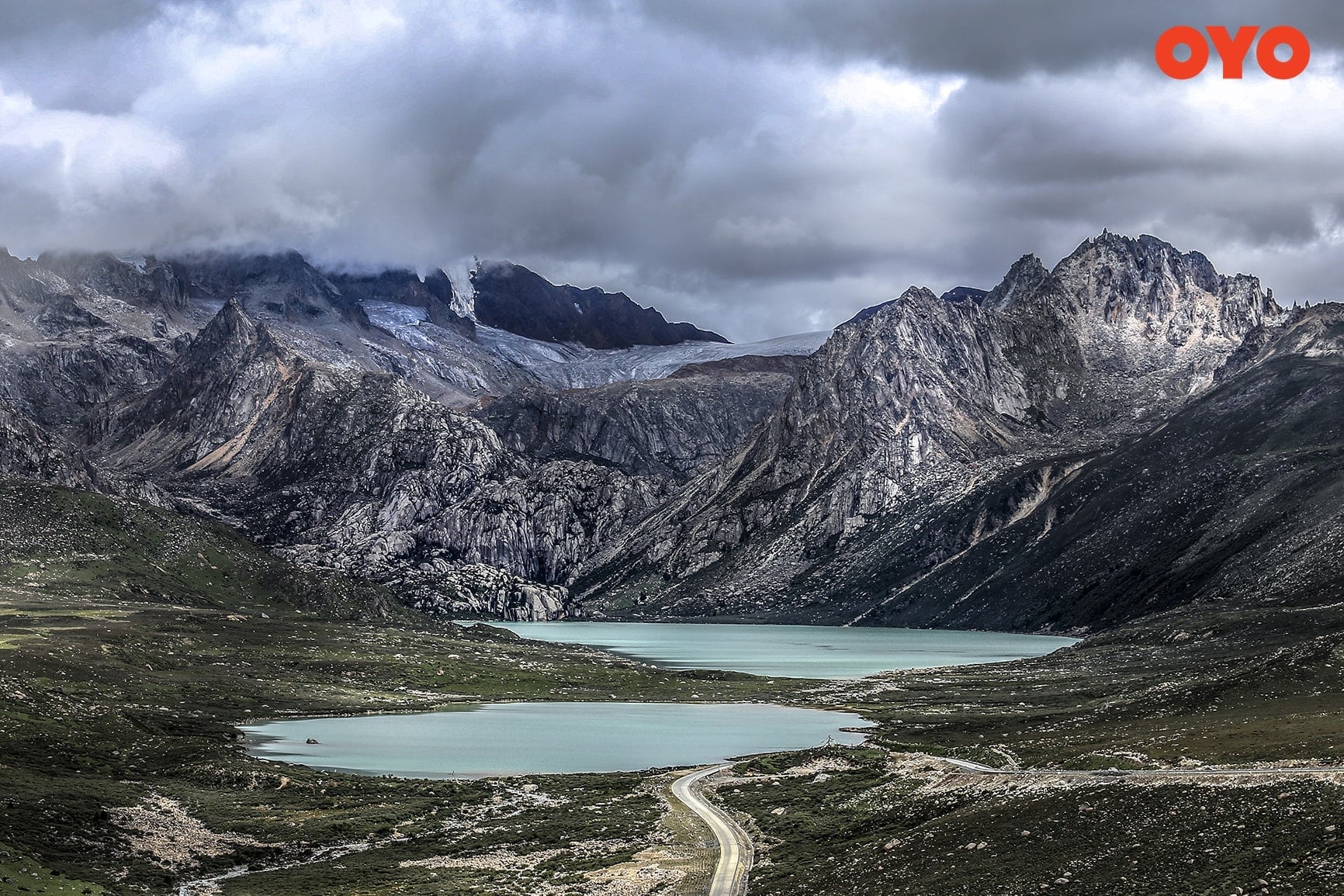
(i) On your visit to the hill station, do include the Nathu la pass in your travel itinerary. This second highest mountain pass in India offers a spectacular view from the top and was historically the gateway of Silk Route. On your way to the pass, make a brief stop at Ban Jhakri Waterfall, a popular picnic spot.
(ii) The frozen Tsomgo Lake is 2 hours away from the main city on the way to Nathu la, but its unique pristine beauty will make the drive worth it!
Where to Eat
The rich cuisine of Gangtok is heavily influenced by the city’s geographical vicinity to India, Nepal, Tibet and Bhutan. Rice meat and dairy are staples in Gangtok. Other than these crops like finger millet, wheat, buckwheat, barley, vegetable, potato, soybeans etc. are extensively cultivated and consumed there. Cherry pepper is a common ingredient in many Sikkimese dishes. While visiting Gangtok, do try some popular dishes like momos, thukpa, Chhurpi-Ningro Curry, kinema curry, sel roti, pakku and mesu pickle.
Dine at:
- Taste of Tibet in Vishal Gaon
- Roll House at MG Marg
- Shuffle Momos at Deorali Bazaar
- Thuendel in Sangava
Where to Shop
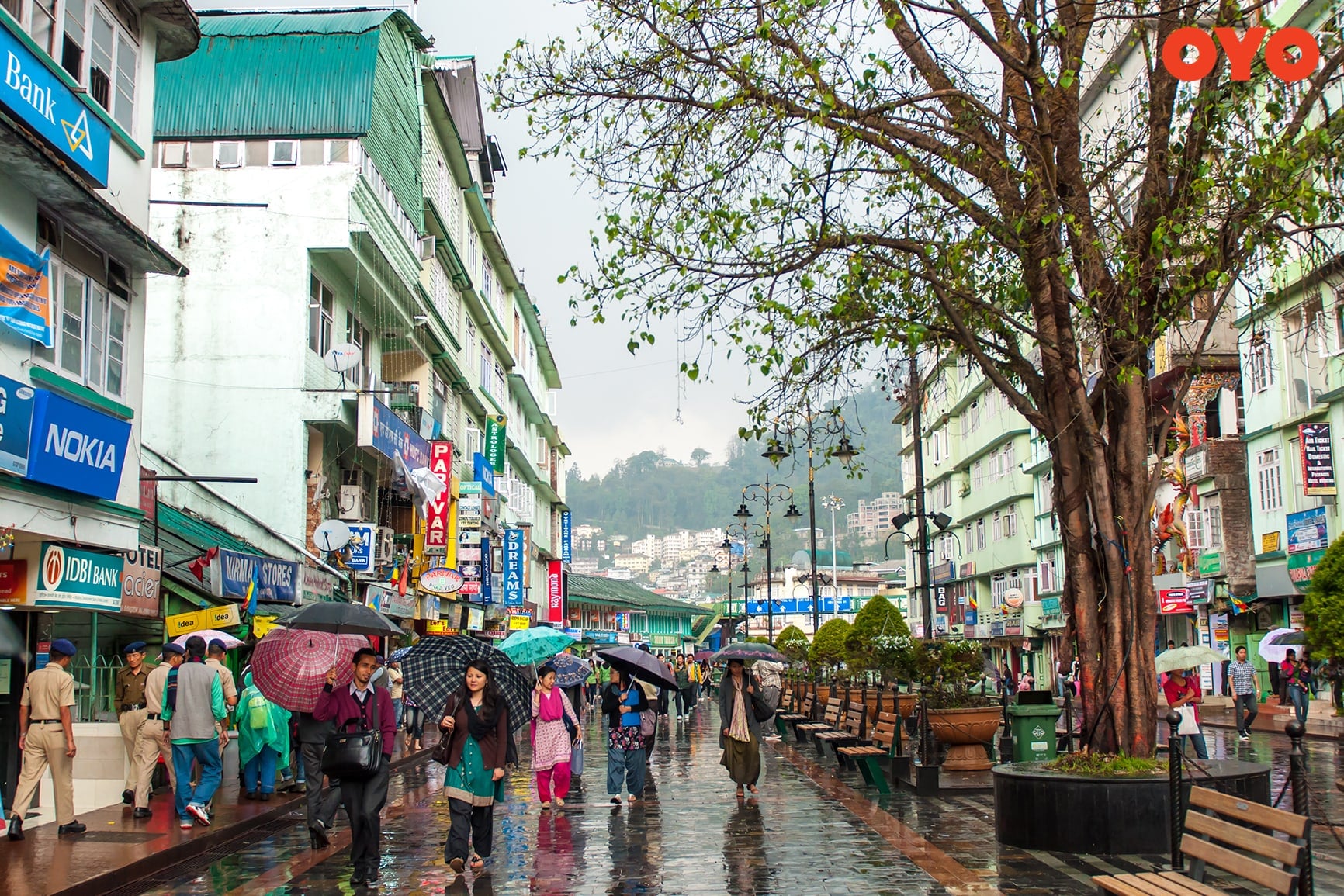
(i) MG Road Market: It is one of the most popular markets of Gangtok. The market is a great place to buy Tibetan artifacts, trinkets, prayer wheels and flags, stone jewelry and thangkas.
Timings: 9:00 a.m. to 8:00 p.m.
(ii) Lal Bazaar: This famous street market is a bargainers’ paradise. The shops and kiosks sell a wide array of products like Tibetan décor items, wall hangings, carpets etc. You may buy some souvenirs from the market as a memory from your trip.
Timings: 9:00 a.m. to 8:00 p.m.
(iii) Directorate of Handicraft and Handloom: This emporium was established in 1957 to preserve and promote the indigenous arts and crafts. You can purchase a wide variety of traditional and authentic products like choksees, hand painted masks, shawls etc.
Timings: 9:30 a.m. to 3:00 p.m.
Get a Taste of the Vibrant Culture of Sikkim
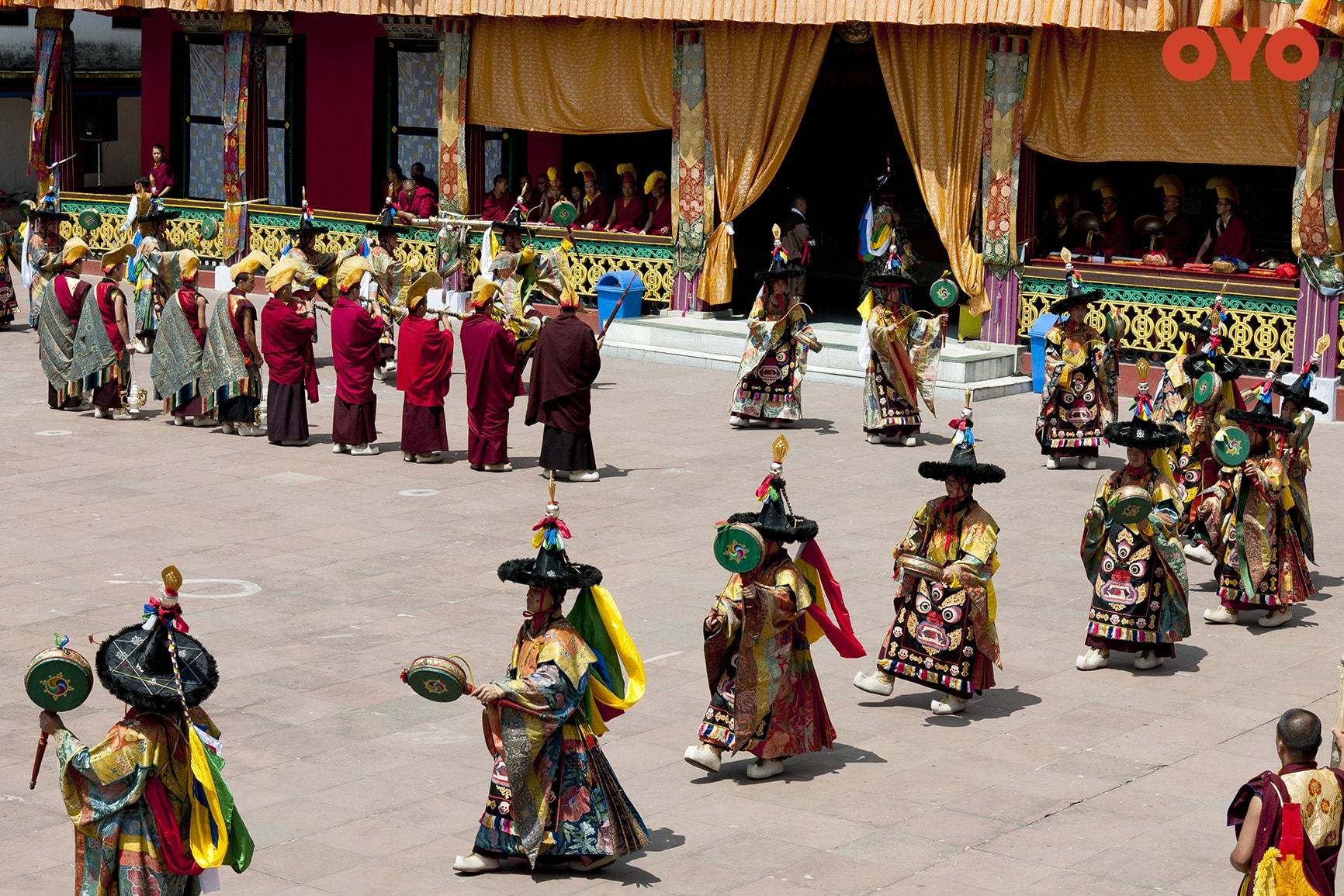
Inhabited by a mix of different ethnic groups- India, Bhutanese, Lepcha; the culture of Gangtok reflects the traditional values and heritage of these group of people who call this city their home. Nepali is the most spoken language of Gangtok while Buddhism is the quintessential religion. The locals value their cultural roots while also respecting the heritage of those belonging to a different ethnicity. This inclusive and harmonious culture is reflected in their folk arts and festivals like Maghe Sankranti, Chotrul Duchen and Drupka Teshi.
Come and experience the rich culture of North East in the picturesque hill station of Sikkim- Gangtok.

- 28 Best Weekend Getaways From Delhi Within 300kms – 400kms [2020] - July 19, 2019
- 10 EXCITING WEEKEND GETAWAYS FROM CHENNAI - February 28, 2019
- 28 Exciting Weekend Getaways From Bangalore Within 300 kms - January 3, 2019
- Your Ultimate Guide to Explore Goa - November 10, 2018
- 8 Super Duper Cheap Holiday Destinations In India - January 20, 2018
- Inside The Silicon Valley Of India- Bangalore - December 27, 2017
- Exploring the Forts of Jaipur: Shortcuts and Hidden Passages - December 15, 2017
- A Promenade Through The Blue City: Jodhpur Travel Guide - December 1, 2017
- Gurgaon Beyond Skyscrapers: A Travel Guide - November 23, 2017
- Gangtok Travel Guide: Exploring The Ancient Capital of Sikkim - November 23, 2017

